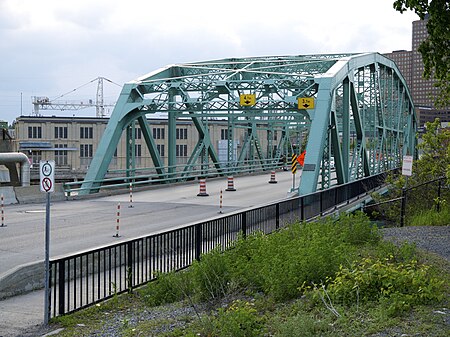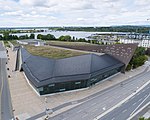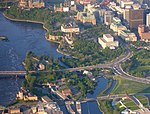Chaudière Bridge
1828 establishments in Lower Canada1828 establishments in Upper Canada1844 establishments in Canada1892 establishments in Ontario1892 establishments in Quebec ... and 12 more
1919 establishments in Ontario1919 establishments in QuebecBridges completed in 1828Bridges completed in 1844Bridges completed in 1892Bridges completed in 1919Bridges in GatineauBridges in OttawaBridges over the Ottawa RiverRoad bridges in OntarioRoad bridges in QuebecTruss bridges in Canada

The Chaudière Bridge (French: Pont de la Chaudière) crosses the Ottawa River about 1 km (0.6 mi) west of Parliament Hill, joining the communities of Gatineau, Quebec and Ottawa, Ontario, linking Rue Eddy in the Hull sector of Gatineau and Booth Street in Ottawa. The bridge is one portion of multiple spans constituting the Chaudière Crossing, which still contain portions of the first bridge linking Ottawa with Hull dating back to the time of Colonel By in the 1820s. The bridge passes through the E.B. Eddy Company complex adjacent to the Chaudière Falls, from which the bridge gets its name.
Excerpt from the Wikipedia article Chaudière Bridge (License: CC BY-SA 3.0, Authors, Images).Chaudière Bridge
Chaudière Bridge, (Old) Ottawa Hull
Geographical coordinates (GPS) Address Nearby Places Show on map
Geographical coordinates (GPS)
| Latitude | Longitude |
|---|---|
| N 45.4211 ° | E -75.7186 ° |
Address
Pont de la Chaudière
Chaudière Bridge
K1A 0N9 (Old) Ottawa, Hull
Quebec, Canada
Open on Google Maps








